Koryu Literature
Part 2 of HEMA and Koryū: An FAQ for the HEMA practitioner
By Paul 'Batman' O'Brien
B.A., N.C.E.H.S., Dip. Acu., Adv. Dip. OBB, Cert Clin. Med. Pn1, PN-SSR, PN-NCA, M.AFPA, M.ETCMA, M.C.Th.A.
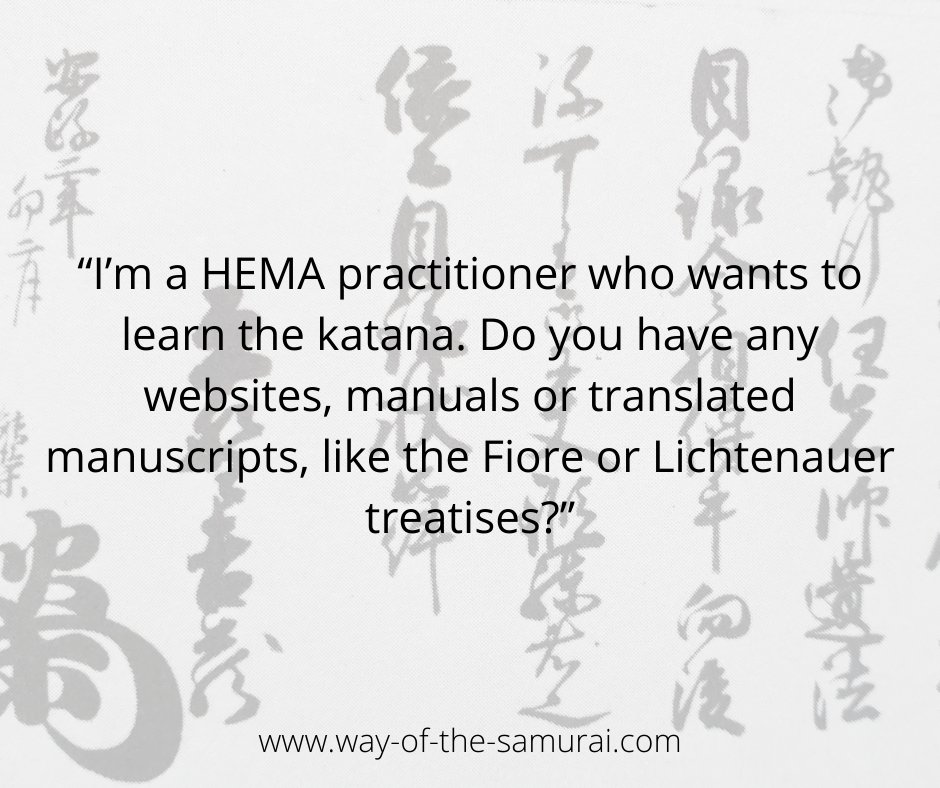
Koryu Literature, part 2 of my 5-part series on HEMA and Koryu focuses on some of the most common questions I get asked by HEMA enthusiasts. For example; “I’m a HEMA practitioner who wants to learn the katana. Do you have any websites, manuals or translated manuscripts, like the Fiore or Lichtenauer treatises?”
In this article, I'm going to give you a definitive answer on this. :-)
Read on...
Koryu Literature
In Koryū bujutsu, most schools, known as ‘ryū’ have documentation in the form of “makimono” and “densho”. More often than not these documents, these pieces of Koryu Literature, simply list the names of the techniques. They may be accompanied by some basic stick figures, or an image relating to the mythology of the school. Such images feature people standing on one leg atop a charging boar, or a bird demon known as a Tengu holding a stance. These are not instructional images. In some of the more detailed scrolls, there may be poems or brief passages.
Secrets of the Ryū in Koryu Literature
Here's the thing - within the Koryū bujutsu - it is impossible for anyone outside of the ryū, any ryū, to understand the mechanics and philosophy (Mu = Way) based on the documents of Koryu Literature. The reason for this is very simple. Koryu Literature was written in such a way so as to be deliberately vague, to obscure the meaning to outsiders and only allow those initiated through the physical mysteries of the ryū to understand what the technique being referred to is and how it was performed. These documents are more obscure and vague than the Liechtenauer zettel. No amount of documents, images and video can truly transmit Koryū bujutsu.
For example here is some Koryu Literature on the Eishin Ryū, one of the Koryū schools of Iai that I study in the form of "tanka" (a type of poem):
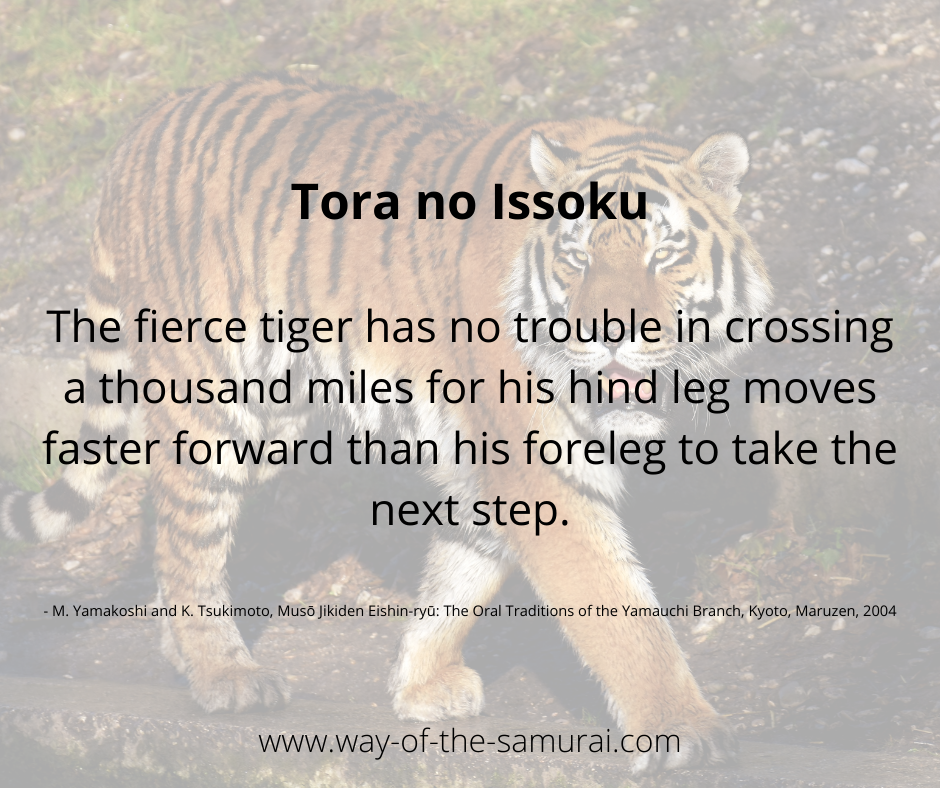
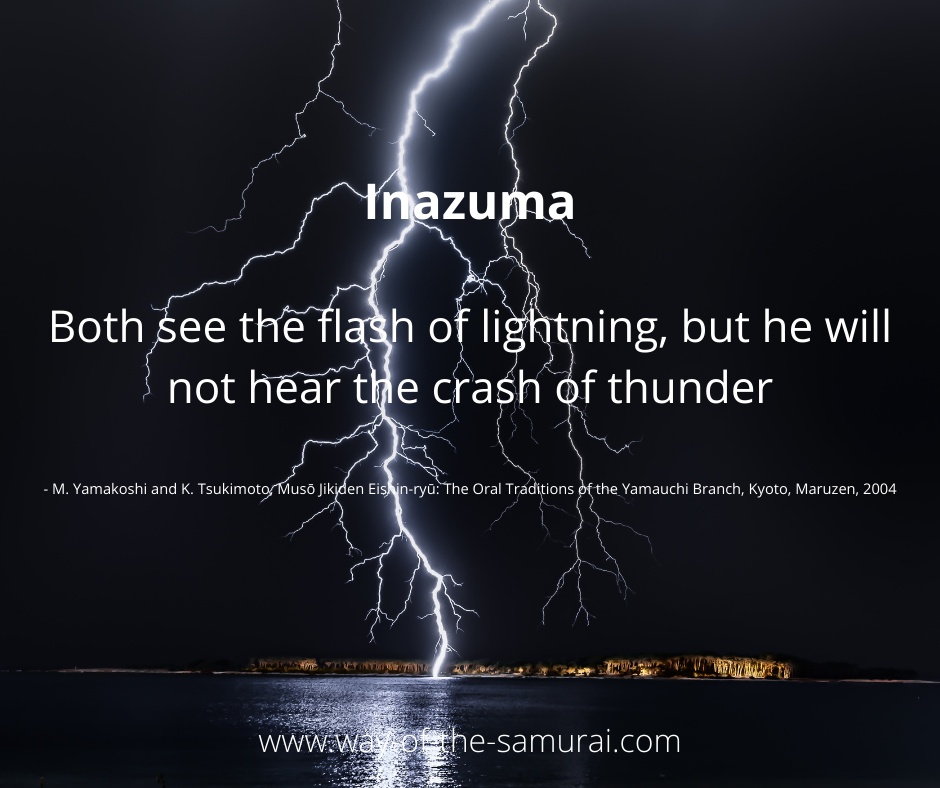
Neither of those poems will make any sense whatsoever to anyone outside of the ryū. But they make sense to those who have trained in the ryū. The first explains the movement, speed and timing of a particular form. The second explains the nature of the draw of a particular form and the decisive cut, but also illuminates the timing, distance and speed of that form. But without the context - it's impossible to develop the correct technique from these writings of Koryu Literature.
“...the scrolls are notoriously and deliberately vague. These records of methods, called makimono ("wrapped things"), usually copied from originals by one's sensei and presented in sections as he progresses in the ryū, are not intended to be step-by-step textbooks. References are often oblique, information fragmented and couched in cabalistic aphorisms within the scrolls. To someone without an introduction into the strategies and tactics of the ryū, these makimono would be nearly meaningless. They are more a shorthand series of notes, decipherable only to the initiated”.
- Dave Lowry, “Obligations” (https:// Koryū.com/library/dlowry5.html)
Stick figure drawings found in Koryu Literature cannot show the transitional movements. This is true even with HD photographs and video. Today there are several modern manuals on Japanese swordsmanship. They are packed with hundreds of photographs, over multiple angles. Accompanied by detailed descriptions and they don’t even come close to explaining Iai or kenjutsu. They are useful references, but not one of them can show the subtle transition of weight from one hip to the other, they can't show you the timing of tenouchi or articulate the movement of the centre nor show you how to cultivate and deploy inner power. They cannot let you feel seme (pressure) or it’s absence, or the capture of metsuke (a type of vision). They can describe them, but unless you see it and feel it from someone who actually does it, someone who can show you those subtle moments, the ebb and flow of power, the transitions...there is a reason people dedicate their lives to the study of these ryū. If it was as simple as following the dance steps in a book, you’d have it down in a weekend.
And speaking of instructional manuals, let’s talk about the most famous piece of Koryu Literature in the world, the Go Rin no Sho, or Book of 5 Rings. Oftentimes I am confronted by people randomly inquiring about my dojo, who tell me they have studied the famous samurai, Miyamoto Musashi’s art of kenjutsu deeply…it turns out more often than not all they have done is read a translation of his book, the Go Rin no Sho. But this famous text was not written as an instruction manual for the general public. The Go Rin no Sho is an internal work, written for Musashi's students and intended to be burned on his death.
"To quote Sosnowski, MD (Prelude to Translation 2005): “The most famous bodies of literature were written in Biblical Hebrew, Classical Latin, Sanskrit, Classical Chinese etc. Not in English. Due to this fact translated works are open to varied interpretation based on experience”
In the case of Gorin no Sho translations up to now show a definite ‘lack’ of experience of the writer/interpreter.
Some foreign words do not even have direct rendition. Translation from another language gives the choice to the interpreter to substitute his own words based on his vocabulary. The thing is one word alone can vastly change the meaning of the text.
We can add to this one more problem. Gorin no Sho was written in Japanese Medieval times. At that particular time education was drawn from Confucian and Buddhist meanings. In reading these works one can find the real and hidden deep meaning in Japanese/Chinese calligraphy...
...Gorin no Sho was written for his students...
...In reading Gorin no Sho is it simple to understand? Prof. Karl Friday (Dept. of History, University of Georgia) contends that the lack of accuracy in translations is the result of inadequate background knowledge of a subject...
...I have read all the published translations.. they all miss out to a large extent of what Musashi relates to us."
- Colin 'Hyakutake' Watkin - Hyoho Niten Ichiryū senior practitioner, "The Go Rin no Sho Of Miyamoto Musashi", Sei Do Kai Productions, 2014, Kim Taylor.
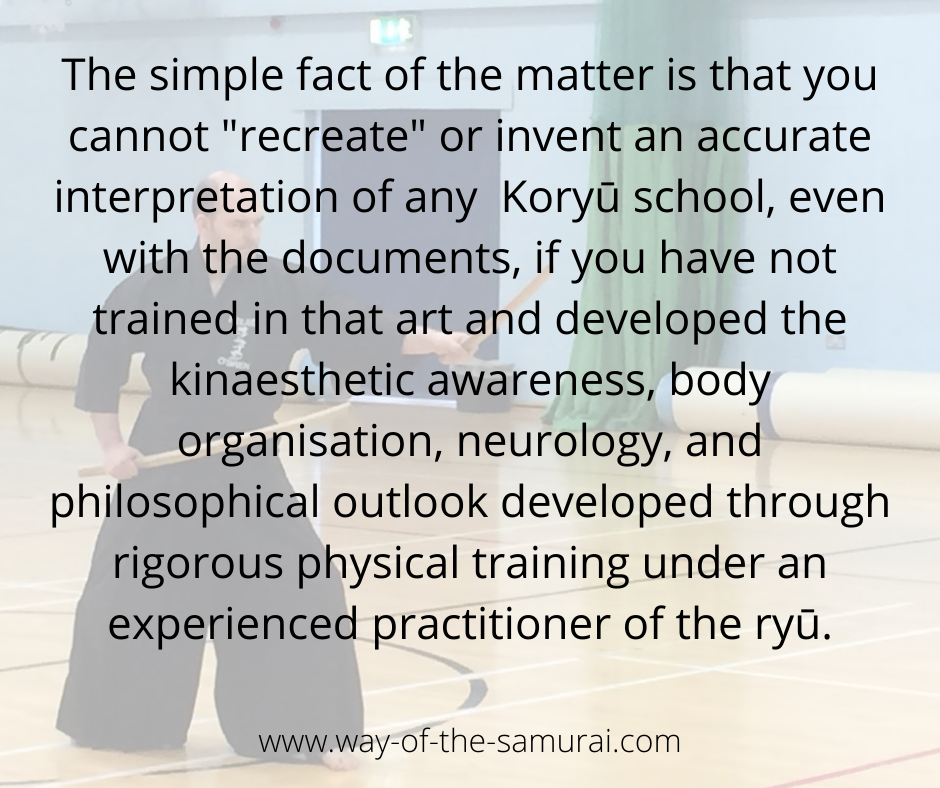
The simple fact of the matter is that you cannot "recreate" or invent an accurate interpretation of any Koryū school, even with the documents of Koryu Literature, if you have not trained in that art and developed the kinaesthetic awareness, body organisation, neurology and philosophical outlook developed through rigorous physical training under an experienced practitioner of the ryū.
Musashi himself fundamentally believed this. For example the Hyōhō Sanjū-go Ka Jō ("Thirty-five Articles on Strategy"), written specifically for Lord Hosokawa, sees Musashi frequently refer back to actual physical training in the ryū;
"In addition, this style is practised and acquired individually, as the specifics of movement of the sword, and other such things which are conveyed orally; do not need to be written down"
- Miyamoto Musashi - The Five Rings; Miyamoto Musashi's Art of Strategy. Trans. Groff, David K.
Of course Musashi himself only gives the briefest of explanations in the Go Rin no Sho on any matter as it was not written for a general audience. It was written for ONE student, Terao Magonojō.
"The particular recipient he addresses the five scrolls of the Go Rin no Sho was Terao Magonojō, brother of Terao Motomenosuke (who eventually received the "Thirty-five Articles on Strategy") and one of the three men entrusted with the continuation of the Ni Ten Ichi Ryū school. As accomplished swordsmen who had trained countless hours with Musashi, these words would largely have been reminders of what they had already learned under Musashi's tutelage".
- Miyamoto Musashi - The Five Rings; Miyamoto Musashi's Art of Strategy. Trans. Groff, David K.
In fact, it is important to keep this in mind with all of Musashi's texts. They were written for specific people, to convey specific ideas to them, based on the fact that they had been training with Musashi sometime.
"in reading these texts it's important to remember that Musashi never meant them to be read by a wide audience, or even for posterity; they were written for specific people with their background in mind. At one point he (Musashi) even suggested that his students burn the texts..."
- Groff - The Five Rings; Miyamoto Musashi's Art of Strategy. Trans. Groff, David K.
Musashi's texts are not a how-to manual but more of a crib notes reminder series for his students from which they can extract the greater teachings taught in the school itself. These are teachings that have been taught in the dojo through oral instruction and countless hours of physical training.
The Oral instruction here is key. This is called kuden.
“Makimono serve as a written record of the kata and principles of the ryū. But instruction must come as well, from the teacher himself. This personal aspect of the bugeisha's learning is the kuden, literally the "oral teachings" that cannot be found in any scroll or text. The kata chotan ichimi is a good example of the importance of the kuden as they apply to kenjutsu, the art of the sword. Nothing in the written makimono mentions the significance of the shift in stance at the onset of the kata. The switch, changing from a right leg forward posture to one with the left leg leading and lowering the sword at the same time, seems to be a weakening of the defense that might have been afforded by the kamae, the physical carriage of readiness taken by the swordsman. In a way, I had learned through through Sensei's kuden, there is a weakness of sorts, in the position. kamae, often misunderstood as postures meant to display strength, to make the body impregnable, are often quite often just the opposite. Many kamae are a ruse, a combative invitation, a deliberate attempt to "sucker" an opponent, making him go for an obvious opening offered in your posture.
…..The combative advantages this modification offers are not to be found, for the most part, within the teachings of the makimono. They are passed along from teacher to student, a careful transmission through the kuden, the oral traditions of the art.”
- Dave Lowry, “Obligations” (https:// Koryū.com/library/dlowry5.html)
Of course this is an immediately understood principle of EVERY genuine Koryū. Koryū is about the transmission of an oral history, a lived history; Technique, strategy and insight passed physically, kinesthetically and orally to the next generation. It's about hard practice, shaping the body and mind to the demands of the ryū. Not adjusting everything to suit yourself.
"you don’t join a school and learn the choreography of a sword fight. The kata are pattern drills, and those forms sometimes have more to do with how to organize the body, how to develop a specific physical or mental attribute, rather than a simple technique detailing “if he does this, then you do that”. Sometimes a given element is so important that the kata may not look very martial, even sloppy or stupid to an outsider, but what it is developing has nothing to do with a replica of “combat”, but to train a specific attribute".
- Ellis Amdur, "Being Old School: An Interview with Ellis Amdur on the Classical Martial Arts of Japan", (https://freelanceacademypress.wordpress.com/2014/11/06/going-old-school-classical-martial-arts/)
The private nature of these texts means very few are available outside of family, libraries and specific collectors. Most are not translated into English and are of little help when they are to those not in the ryū itself. The texts of Koryu Literature are often little more than a list of names, sometimes there are brief images, but they are little more than shadows on a cave wall. It is impossible to learn the dance from watching the shadows alone, you need to be trained in the dance which casts those shadows. Without initiation into the physical and oral teachings of the art, the documents are worthless. Even detailed modern manuals offer little to those not already familiar with teachings that cannot be written down, photographed or video, only physically experienced.
Coming back to Musashi's teachings, put forth in the Go Rin no Sho and as practiced in Hyōhō Niten Ichi Ryū. They can be understood only through the rigorous training of the body. It is this training, not book reading, that organises the body, physically, neurologically and psychologically to perform the techniques of the ryū. This too is something Musashi talks about - in fact, close to 80% of the text finishes a specific bullet point with -
"...you will never be able to achieve this without hard training"
"Practice hard"
"Practice this carefully again and again"
"We have to take the tachi in hand and practice hard".
"You should put more effort into practicing".
"You should take a tachi and train practically".
- Miyamoto Musashi, Go Rin no Sho, (trans. Miki Takeshima)
As such, the documents of a Koryu Literature offer little in the way of practical knowledge to a HEMA enthusiast. And this brings me neatly on to the techniques...
Join me for part 3 of this 5-part series as we explore the equivalent to longsword cuts like krumphau and schielhau in Koryū kenjutsu...and discover how the techniques of Koryū can impact HEMA...
You've been reading about Koryu Literature. Check out part 1 of this series - here!
Click here to return to the Way of the Samurai Home Page.
- Home
- Martial Arts
- Koryu Literature
Free Samurai E-books
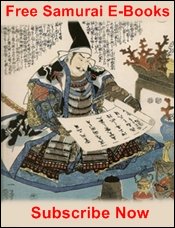
Get Free Exclusive Samurai Guides and E-books

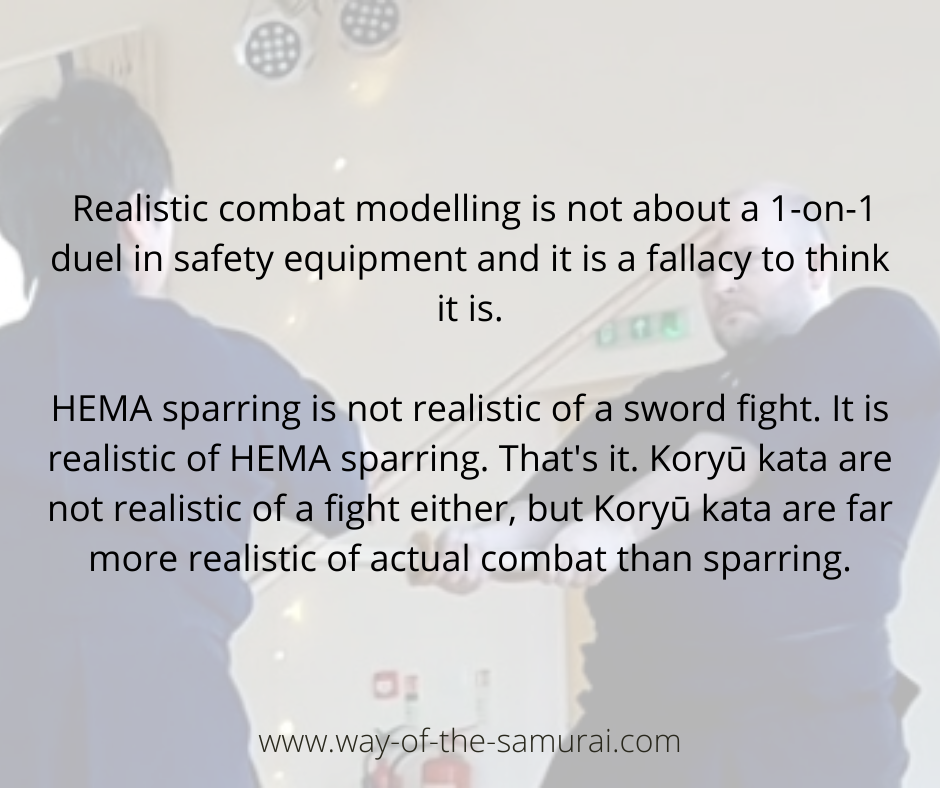
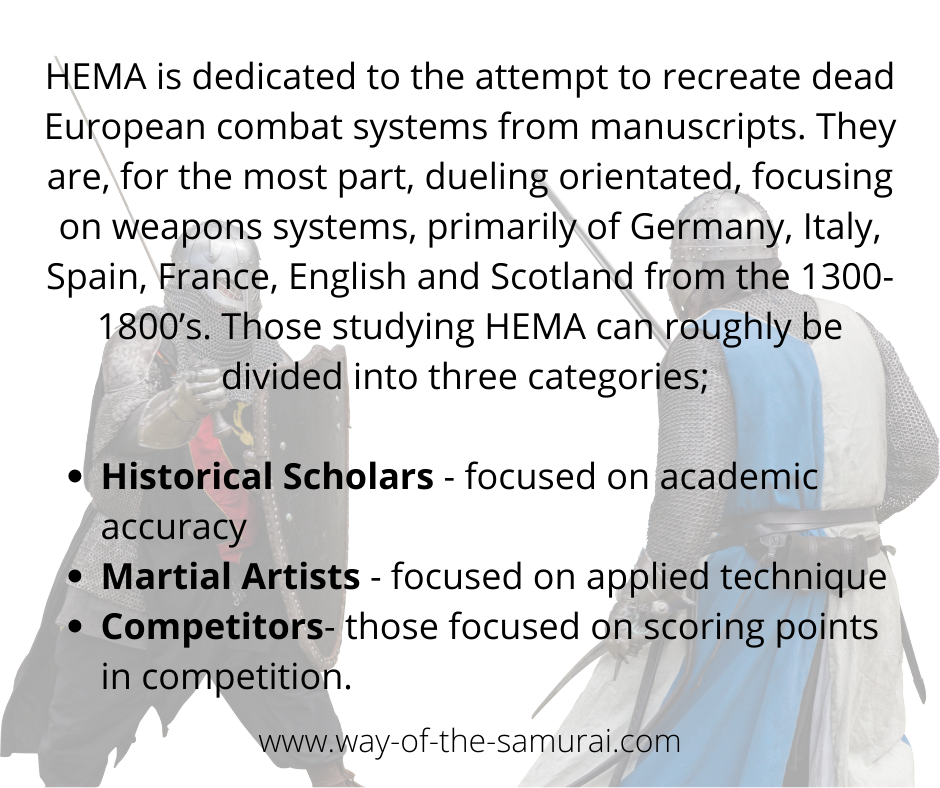
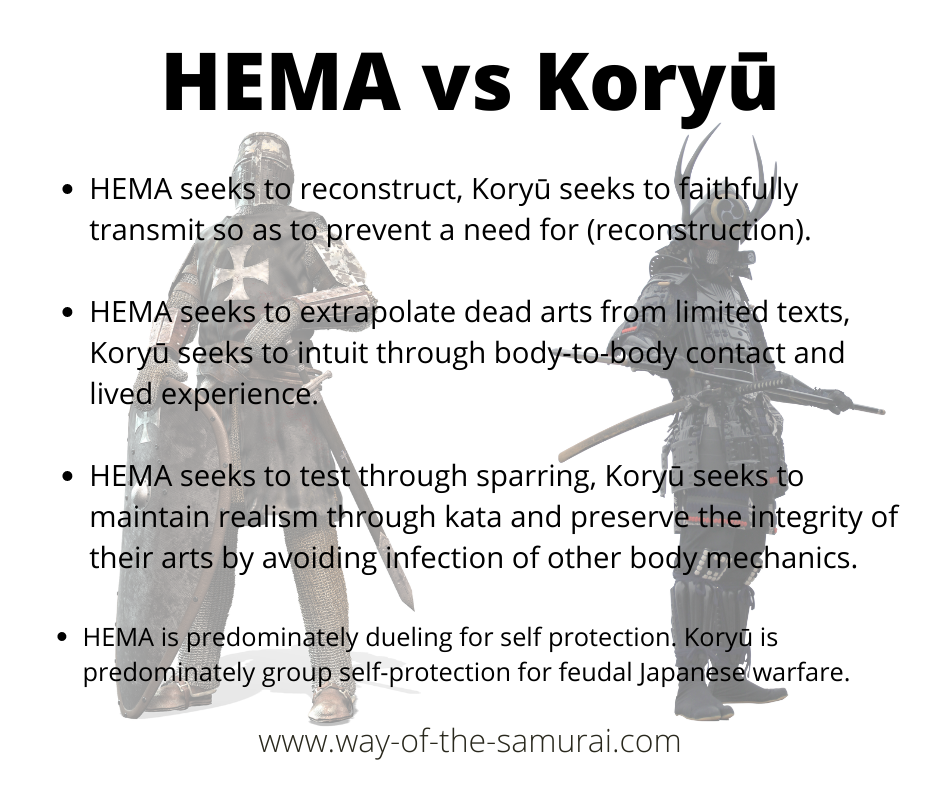




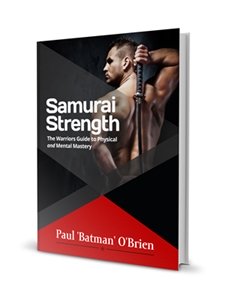
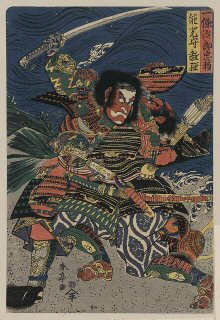
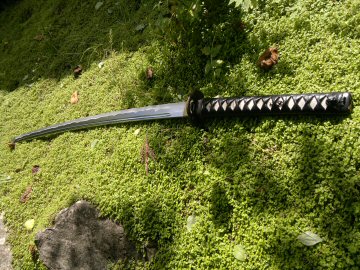
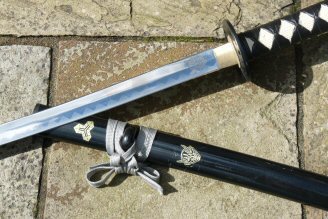
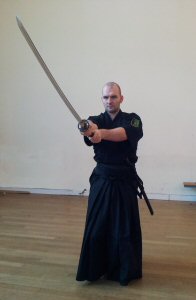
New! Comments
Have your say about what you just read! Leave me a comment in the box below.